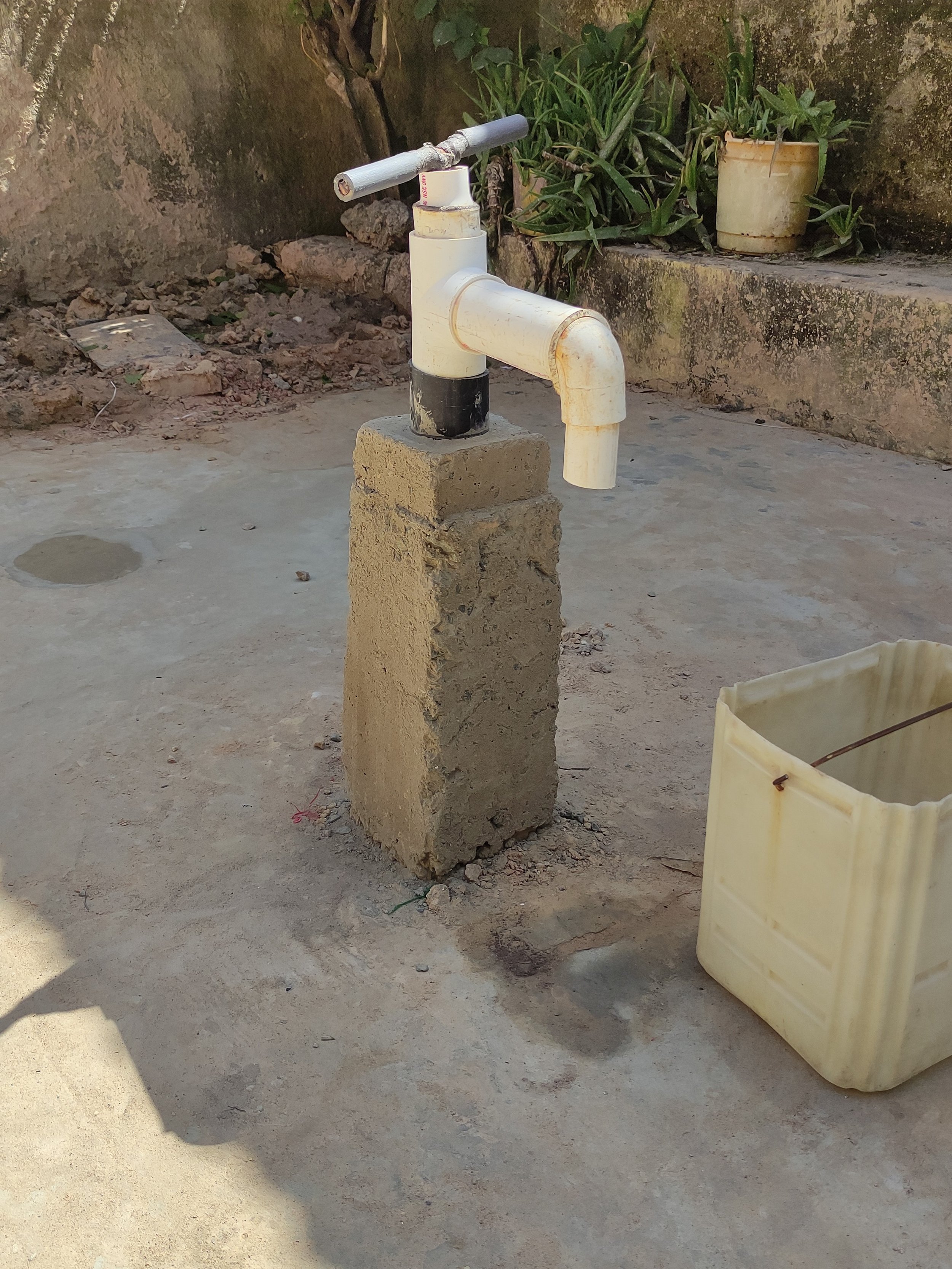Rolls Royce or Ford Fiesta?
What have cars got to do with boreholes and hand-pumps? Well, not a lot really, but they do make for a useful analogy that will hopefully help to explain our philosophy when it comes to building hand-pumps.
First, I’ll need to set the scene.
If I ask you to imagine a well/borehole with a hand-pump, the chances are that you’d probably picture an India Mark II hand-pump.
Used throughout the Sub-Saharan Africa, it is a robust conventional lever action hand-pump, designed for heavy-duty use with each pump serving up to 300 people. For the purposes of this analogy, this is the Rolls Royce.
The Ford Fiesta in this analogy is the Fountain of Life (FoL) pump. Much smaller and less robust than the INDIA MKII pump, it can only serve 100 people.
An FoL borehole & handpump
Constructed from locally sourced materials. Cheap to install and easy to maintain. Can be repaired by the owner or one of our locally based technicians.
Here is a brief side by side comparison of the two pumps
Capacity
INDIA MKII can serve up to 300 people.
FoL pump can serve up to 100 people.
Above ground components
INDIA MKII is constructed of galvanised steel.
FoL pump is made from standard PVC pipe and fittings.
Below ground components
INDIA MKII uses cast iron and galvanised steel pipes, and brass fittings.
FoL uses standard PVC pipe and fittings..
Locally produced
The India MKII has the potential for ‘above ground’ components to be locally manufactured. All the other parts need a high degree of quality control to ensure a reliable operation.
All FoL pumps are made to measure on-site using locally sourced materials.
Manufacturing costs
The cost of the tooling required for the INDIA MKII is substantial and therefore the number of manufacturers will be limited.
Other than the cost of materials there are no manufacturing costs for the FoL pump.
Community management
The INDIA MKII is reliable and popular with the communities. However, it has limited “Community Management Potential”. To service the INDIA Mark II Pump, skills and tools are needed which exceeds the ability of a village-level caretaker.
The FoL pump is reliable but may require more maintenance than the INDIA MKII. It is possible for the owner to repair/maintain with some basic skills and tools.
Cost
A recent project (not Fountain of Life!) to construct 13 new wells using the INDIA MKII (or equivalent such as the Afridev) cost £65, 000 or £5,000 per well/pump.
For the same amount we can fund 360 new FoL boreholes & handpumps at £180 each.
Ownership
The INDIA MKII pump is usually used for community water supplies. A common problem that arises is that when everybody owns something it belongs to nobody, and then no-one wants to take responsibility for routine maintenance and breakdown costs.
FoL pumps are owned by individuals/families. Because they own it, they take care of it. This sense of ownership creates not only dignity but long-term sustainability and self-sufficiency.
An abandoned non-operational INDIA MKII pump.
The reasons why it is non-operational are unknown. It could be that there are no local pump mechanics; spare parts are not available locally; spare parts are available but too expensive; no-one wants to take responsibility….
A study of handpump functionality carried out by Foster et al. (2020), concluded that in excess of 25% of handpumps in sub-Saharan Africa are non-functional at any one point in time.
So, given the choice, what would you buy? The Rolls Royce or the Ford Fiesta?
The Rolls Royce is undeniably bigger and better than the Fiesta. Built to a high level of quality, reliable and built to last it seems like the obvious choice. The Fiesta is smaller, cheaper, will almost certainly break down, and won’t last you forever. But is it such a bad choice?
When your Rolls Royce breaks down or you have an issue with it what will you do? There probably isn’t a dealer in your town that you can take it to and it is unlikely that Halfords stocks spare parts. You might have to find a specialist or approved mechanic, it could take weeks or months, and you know it is going to be expensive. If you own a Fiesta, all mechanics can repair them. You can repair them yourselves, buying parts from your local motor spares supplier. If you can’t fix it yourself, you can take it to almost any garage or call a mobile mechanic. Compared to repairing the Rolls it will be much quicker, easier, and a lot cheaper.
Here is where the analogy breaks down a little bit. The average cost of constructing one well with an INDIA MKII pump is £5,000. For that amount we can construct 27 FoL pumps. If one INDIA MKII pump becomes non-operational it will affect a whole community of up to 300 people. If one FoL pump becomes non-operational it may affect up to 100 people but there will still be another 26 operational pumps not too far away.
We are not saying that the INDIA MKII is a bad choice and the FoL pump is the best choice but that the right pump needs to be used in the right situation. Bigger and more expensive is not always best. We believe that by keeping things cheap and simple SDG6 can be achieved much quicker and in a more sustainable fashion.
India Mark II - https://www.rural-water-supply.net/en/implementation/public-domain-handpumps/india-mark-ii
FOSTER, T., FUREY, S., BANKS, B., and WILLETS, J., 2020. Functionality of handpump water supplies: a review of data from sub-Saharan Africa and the Asia-Pacific region - Supplemental Information. [online]. Available from: https://www.tandfonline.com/doi/suppl/10.1080/07900627.2018.1543117?scroll=top [Accessed 22 Apr 2022].


